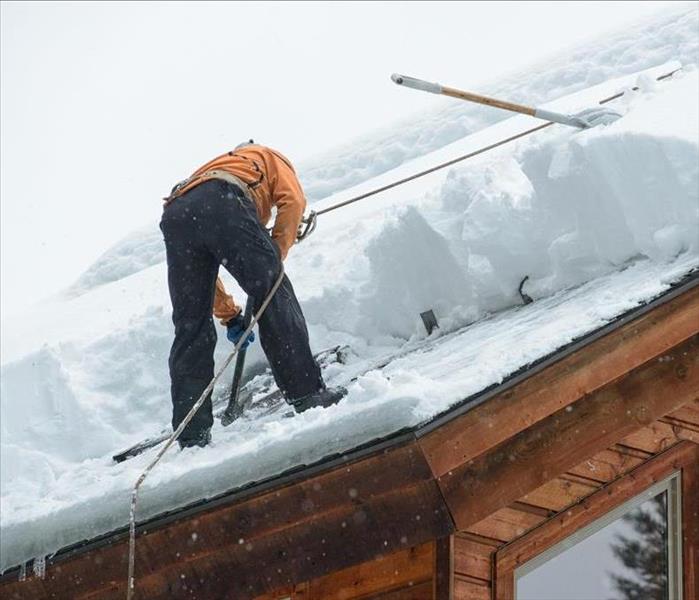What Is an Ice Dam and Can I Prevent It
2/23/2022 (Permalink)
Winter in Sandy, UT, is not for the faint of heart. Many days, you probably begin by dealing with the snow that piled up overnight. This work takes time and zaps your energy as you snow blow and shovel it off the driveway, not to mention having to scrape it off your car. While it probably won't risk making you late for work as the snow on the ground, an ice dam can be a significant problem during a winter storm.
Ice dams are formed when ice accumulates on a home's eves, creating a ridge. This ridge traps the water from melting snow, preventing it from quickly draining from the roof. Then, the water can refreeze. The freezing backup can cause roof issues and indoor water intrusion problems that often lead to water damage to attics, insulation, ceilings, and walls.
Additionally, water leaks can lead to secondary damage such as mold. The mold infestation can turn out to be an even bigger problem than the original ice and water.
How Can I Prevent Ice Dams at My Home?
By controlling the amount of heat that escapes through the home's roof, you can reduce your risk of ice dams. There are several ways to do this.
1. Control the Home's Upward Airflow
Prevent air from leaking through the ceiling into the attic. Most homes have small gaps in the walls and ceiling from which air can escape. You can do this by creating an air-tight seal around all leakage paths. This action will prevent warm, humid air from rising to the attic.
2. Increase the Home's Insulation
Ice dams can be significantly reduced by adding insulation in your home's ceiling and roof areas. This insulation will help keep the warm air inside the house, preventing it from warming the roof. You can hire water damage mitigation specialists to perform an inspection to make sure you are leak-free and ready for the next winter storm.
3. Repair Roof Issues
A damaged roof or even missing shingles can provide more opportunity for heat to transfer from the indoors to the outside of the roof. Have your roof inspected regularly and repair any issues immediately.
4. Add Vents to the Roof and Soffits
Sometimes adding vents to the roof and soffits can be a great help if you still have some uncontrolled airflow. They will operate by pushing the warm air out of the roof while pulling the cold air inside. If you are still experiencing roof issues when it snows, you can often get a step ahead of the game by utilizing a snow rake. A snow rake is a tool made for pulling the snow down from a roof. Raking your roof at least once during a winter storm can prevent snow from piling up. Just be careful when performing this job, as you can get injured by the influx of falling snow and ice.
With these tips, you can prevent an ice dam. By implementing these suggestions now, you can avoid some potentially costly damage. Begin today planning for your next heavy snow. In the meantime, check with your insurance agent to verify that your homeowner's insurance includes ice dam coverage.



 24/7 Emergency Service
24/7 Emergency Service
